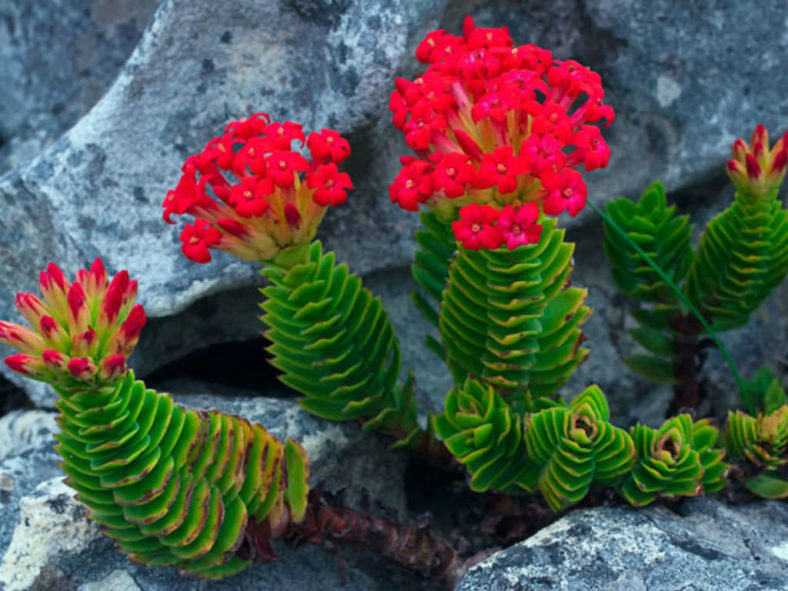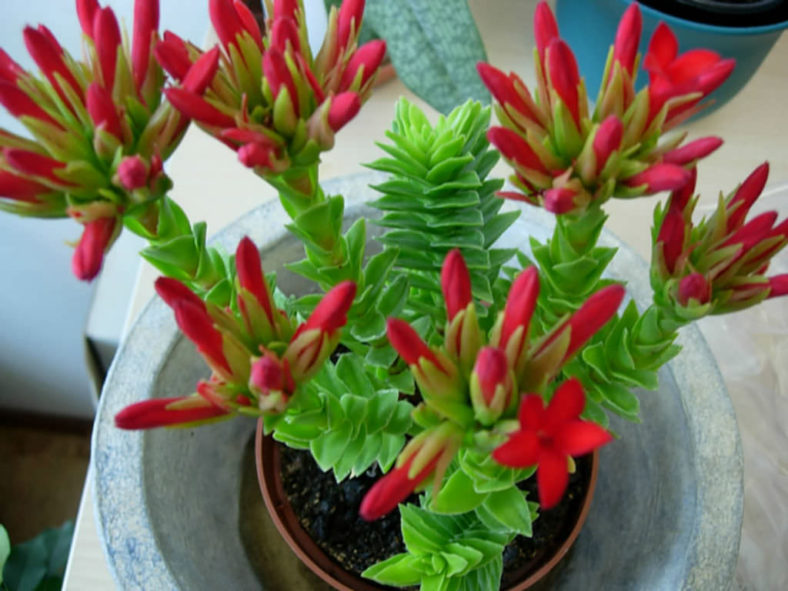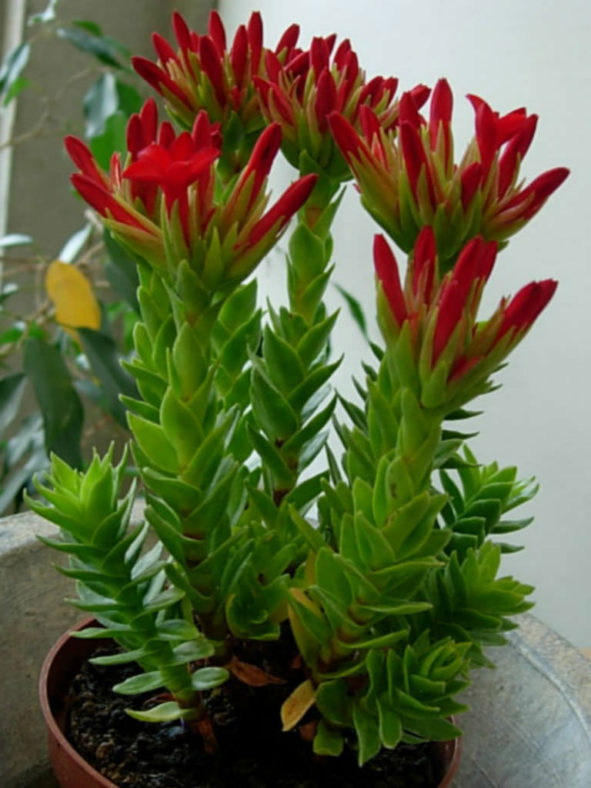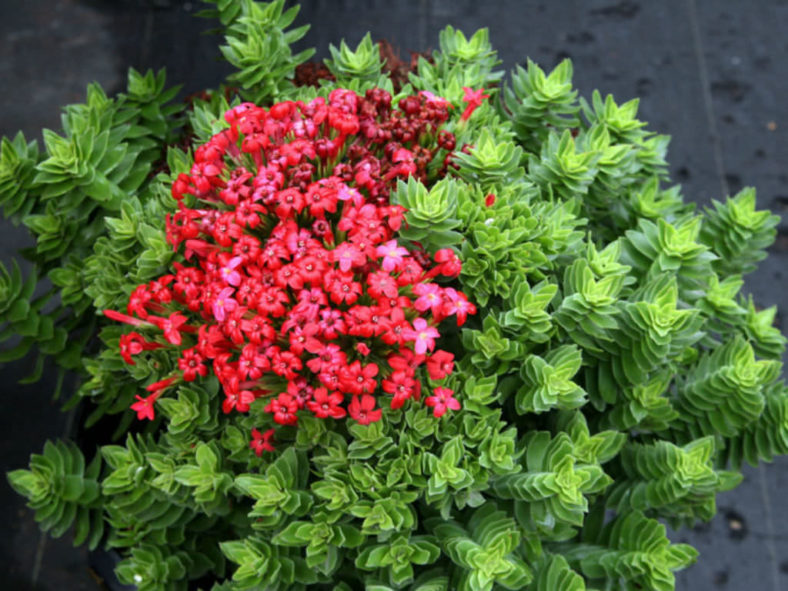Scientific Name
Crassula coccinea L.
Common Name(s)
Klipblom (Afrikaans), Red Crassula
Synonym(s)
Danielia coccinea, Dietrichia coccinea, Kalosanthes coccinea, Larochea coccinea, Rochea coccinea, Sedum rochea
Scientific Classification
Family: Crassulaceae
Subfamily: Crassuloideae
Genus: Crassula
Etymology
The specific epithet "coccinea" (pronounced "kok-SIN-ee-uh") means "colored or dyed scarlet" and refers to the flowers of this species, which are typically brilliant red in color.
Origin
Crassula coccinea is native to South Africa (Western Cape). It grows in crevices on sandstone ledges, especially at the edges of plateaux from Cape Peninsula to Still Bay.
Description
Crassula coccinea is a sparingly branched succulent shrub with green, occasionally brownish-red leaves arranged in four vertical rows, overlapping each other along the stems. The stems are erect to spreading and can grow up to 2 feet (60 cm) long, branching from the base. The leaves are flat, ovate to elliptic, with ciliate margins, measuring up to 1.4 inches (3.5 cm) in length and up to 0.6 inches (1.5 cm) in width. The old leaves are not deciduous.
In summer, the striking flowers appear in dense, flat-topped heads at the end of the stems. The fragrant flowers are tubular, brilliant red, or rarely white, with various tinges of red. The flowers can measure up to 1.8 inches (4.5 cm) in length, while the flower heads can reach a diameter of 4 inches (10 cm).

How to Grow and Care
Hardiness: USDA hardiness zones 9a to 11b: from 20°F (-6.7°C) to 50°F (10°C).
Crassulas are easy to grow but susceptible to mealybugs and fungal diseases. Overwatering is sure to be fatal, as with all succulents, so err on the side of being too dry rather than too wet. Never let your plant sit in water. If you water from beneath by allowing the plant to sit in a saucer, pour off any excess water after a few minutes.
These succulents are generally started by division, offsets, or leaf cuttings. Crassulas can be easily propagated from a single leaf. Sprout leaves by placing them into a potting mix for succulents, then cover the dish until they sprout.
Repot as needed, preferably during the warm season. To repot your Crassula, ensure the soil is dry before repotting, then gently remove the pot. Knock away the old soil from the roots, removing any rotted or dead roots. Treat any cuts with a fungicide. Place the plant in its new pot and backfill it with potting soil, spreading the roots as you repot. Leave the plant dry for a week or so, then begin to water lightly to reduce the risk of root rot.
Learn more at How to Grow and Care for Crassula.
Links
- Back to genus Crassula
- Succupedia: Browse succulents by Scientific Name, Common Name, Genus, Family, USDA Hardiness Zone, Origin, or cacti by Genus
Photo Gallery
Click on a photo to see a larger version.


